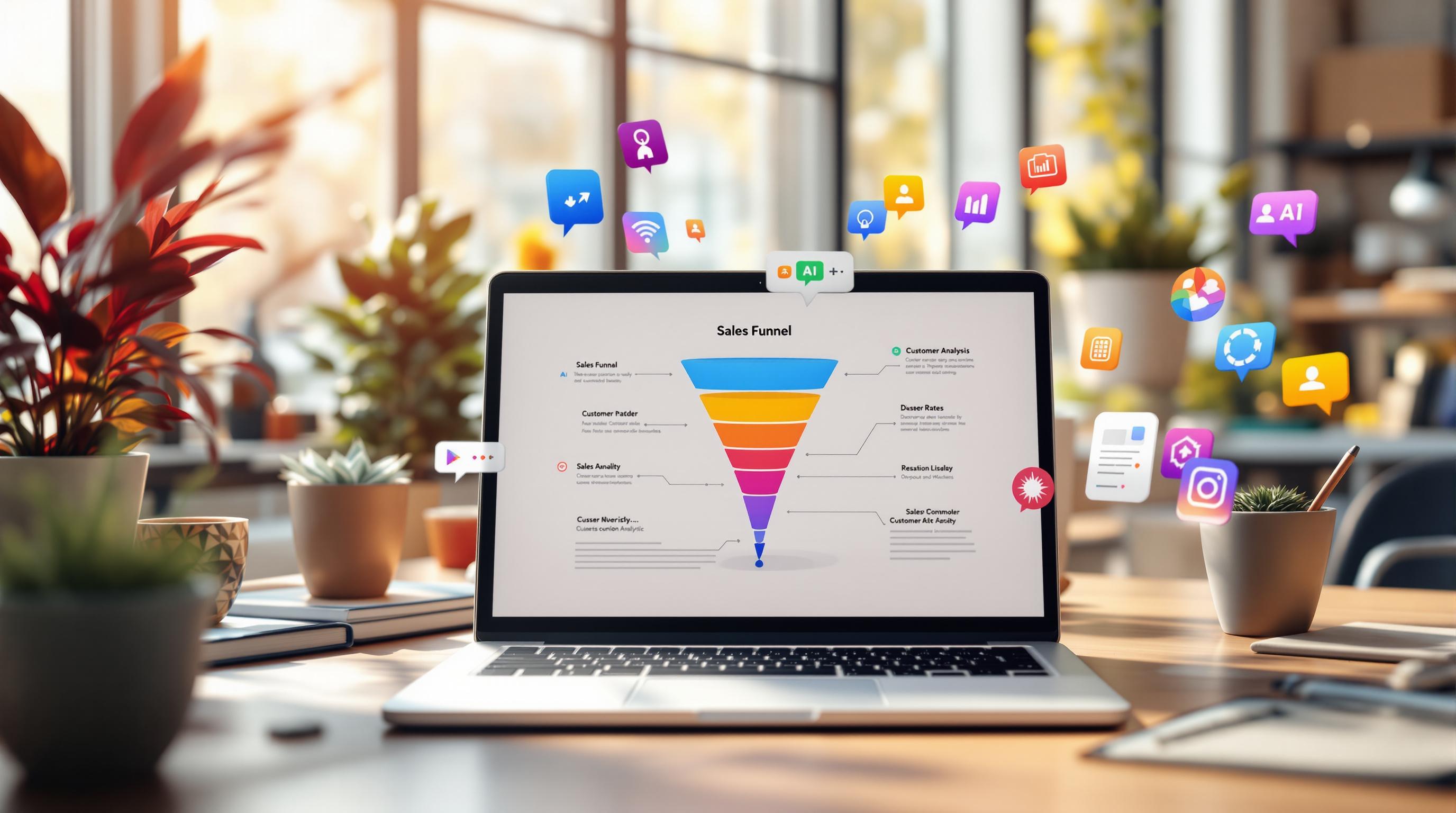Ethical email targeting is about respecting user privacy, gaining consent, and building trust while staying legally compliant. Here's how to do it:
- Get Explicit Consent: Use double opt-in methods to ensure subscribers genuinely want to hear from you.
- Be Transparent: Clearly communicate who you are, why you're emailing, and what content to expect.
- Respect Privacy: Protect user data, limit access, and make it easy for subscribers to manage preferences or unsubscribe.
- Segment and Personalize: Group subscribers by preferences or behavior for more relevant, engaging emails.
- Maintain List Hygiene: Regularly clean your email list, re-engage inactive users, and remove invalid addresses.
Quick Comparison of Consent Methods
| Consent Method | Trust Level | Compliance | Subscriber Quality |
|---|---|---|---|
| Double Opt-in | High | GDPR-compliant | Verified |
| Single Opt-in | Medium | Varies by region | Mixed |
| Pre-checked Boxes | Low | Often non-compliant | Poor |
| Purchased Lists | None | Non-compliant | Unreliable |
Principles of Ethical Email Targeting
To ensure compliance and maintain user trust, ethical email targeting relies on a few key principles. These guide how you approach building and managing your email lists.
Getting Explicit Consent
Always secure clear and direct permission before adding anyone to your email list. Using a double opt-in process - where users confirm their subscription through a verification email - provides a higher level of certainty and trustworthiness compared to other methods [1][2].
| Consent Method | Trust Level | Legal Compliance | Subscriber Quality |
|---|---|---|---|
| Double Opt-in | High | GDPR-compliant | Verified |
| Single Opt-in | Medium | Depends on region | Mixed |
| Pre-checked Boxes | Low | Often non-compliant | Poor |
| Purchased Lists | None | Non-compliant | Unreliable |
Clear Communication
Being transparent is key. Let subscribers know exactly who you are, why you're contacting them, what kind of content they can expect, and how often you'll send emails. This openness builds trust and reduces the likelihood of unsubscribes or complaints [3].
"Transparency is another pillar of an ethical email marketing strategy. It involves being open and transparent about intentions, practices, and data handling." [3]
Respecting User Privacy
Protecting privacy goes beyond compliance; it's about showing respect for your subscribers. Use secure methods to store data, limit access to sensitive information, and offer clear options for unsubscribing or adjusting preferences. Features like preference centers, where users can control the frequency of emails, help maintain trust while aligning with privacy laws.
These principles form the backbone of ethical email targeting. By following them, you can create campaigns that not only comply with regulations but also build lasting relationships with your audience.
Steps for Ethical Email Targeting
Building a Trustworthy Email List
Creating an ethical email list starts with proper consent. Using a double opt-in process is highly effective - it ensures subscribers genuinely want to hear from you, reduces spam complaints, and builds credibility.
| List Building Method | Benefits | Compliance Level | Impact on Engagement |
|---|---|---|---|
| Double Opt-in | Ensures verified subscribers, better leads | Highest | Strong engagement rates |
| Sign-up Forms with Clear Consent | Transparent process, easy for users to manage | High | Moderate to high engagement |
| Embedded Forms on Websites | Seamless signup within context | Medium to High | Variable engagement |
Once you’ve built a compliant list, the next step is tailoring your emails to your audience using smart segmentation.
Segmenting and Personalizing Emails
Segmentation helps you send messages that are more relevant to your audience while respecting their privacy. To do this effectively, group subscribers based on the preferences they’ve shared or their behavior.
Here are a few ways to segment your audience:
- Behavioral Data: Focus only on actions or data explicitly provided by users.
- Preference Centers: Let subscribers choose what topics interest them.
- Engagement Levels: Track how often users interact with your emails to adjust how frequently you reach out.
This approach not only makes your emails more engaging but also helps you identify subscribers who may need re-engagement - or removal.
Keeping Your Email List Updated
Segmentation is just part of the equation. To stay effective, your email list needs regular upkeep to ensure it’s filled with engaged and active subscribers.
Here’s how to maintain your list:
- List Hygiene: Clean your list regularly by removing invalid or inactive email addresses.
- Re-engagement Campaigns: Reach out to inactive subscribers with targeted campaigns before deciding to remove them.
- Preference Management: Make it easy for users to update their interests or unsubscribe.
Using automation tools can make these tasks easier and more efficient. Just be sure to stay transparent with your subscribers throughout the process [2][3].
sbb-itb-8abf799
Tools for Ethical Email Targeting
In today's email marketing landscape, it's essential to use tools that not only improve efficiency but also prioritize ethics. These tools help ensure compliance while protecting user trust and privacy, complementing the segmentation and personalization strategies we've already covered.
Email Extractor Tool - AI-Powered Email Collection

The Email Extractor Tool uses AI to streamline email extraction, offering features like consent tracking, data export, and compliance support. However, it's important to prioritize building high-quality, permission-based email lists over simply growing numbers [1].
Using Automation Responsibly
Automation can play a big role in ethical email targeting by simplifying processes like consent management, data accuracy, and privacy protection. But it must be used responsibly.
Key Practices for Ethical Automation
- Collect emails only from sources where consent has been explicitly given.
- Use verification systems to ensure email validity.
- Keep automated consent tracking and privacy settings up to date.
- Regularly audit your processes to stay compliant.
Research highlights that mailing lists built without proper consent often lead to high bounce rates and even domain blacklisting [2]. To avoid this, automation should focus on:
- Streamlining consent management.
- Ensuring data remains accurate.
- Allowing users to easily update their privacy preferences.
- Performing regular list cleanups to maintain quality.
Conclusion: Ethical Email Targeting and Trust
Key Takeaways
Ethical email targeting goes beyond simply following the rules. It's about building trust with your subscribers. Every step, from managing consent to keeping your email lists current, reinforces these core principles:
- Consent management is the foundation of responsible email marketing.
- Data protection safeguards both compliance and user privacy.
- Transparent communication fosters trust that lasts.
These practices don't just keep you compliant - they help create meaningful connections with your audience.
Building Customer Relationships
Adopting ethical email targeting practices can improve transparency, engagement, and customer loyalty [1][3]. Successful strategies often include:
- Keeping email lists updated to reflect subscriber preferences.
- Ensuring strong data protection protocols are in place.
- Leveraging automation tools responsibly.
- Regularly analyzing engagement metrics to refine efforts.
The results speak for themselves: ethical approaches strengthen trust, improve compliance, and enhance targeting precision. By focusing on these practices, businesses can achieve sustainable growth while honoring user privacy.
FAQs
What is the law on email marketing?
Email marketing in the U.S. is regulated by the CAN-SPAM Act, while GDPR oversees practices in the European Union. Violating the CAN-SPAM Act can result in fines of up to $16,000 per email [2]. To comply, you must:
- Use accurate email headers and clear subject lines.
- Include a valid business address in every email.
- Offer a straightforward way for recipients to opt out.
- Honor unsubscribe requests within 10 business days.
How do I make my email GDPR-compliant?
To meet GDPR standards, you need to focus on protecting user privacy and respecting data rights [3]. Here's what you should do:
| Requirement | How to Implement It |
|---|---|
| Consent Management | Use double opt-in and clear subscription forms. |
| Privacy Policy | Clearly explain how you collect and use data. |
| User Rights | Provide tools for users to manage or delete data. |
Choose an email service provider with built-in compliance tools. Regularly review your processes and update privacy policies to stay aligned with both CAN-SPAM and GDPR regulations.



